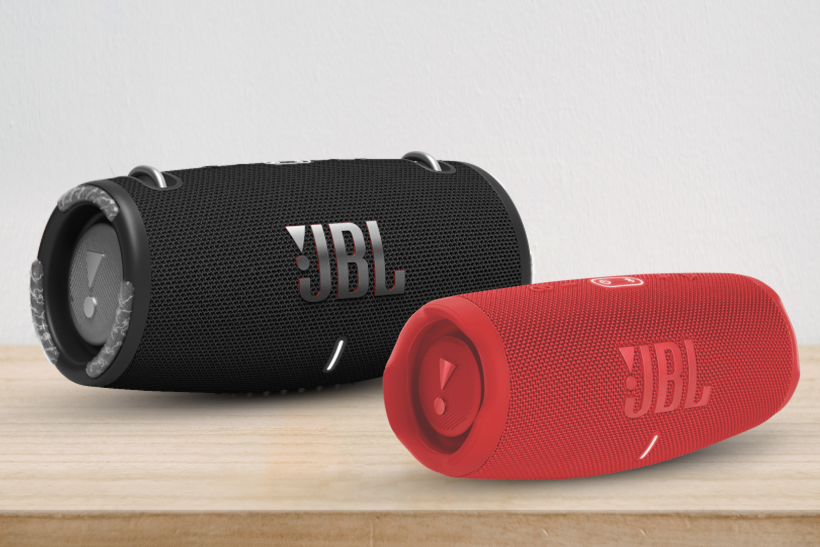The JBL Xtreme 3 is the latest Xtreme series speaker from JBL and it comes with a few upgraded features from the Xtreme 2 speaker. The Xtreme 3 now comes with 2 X 70mm woofers and 2 X 20mm tweeters that deliver crystal clear highs, detailed midrange and very powerful bass response. The Xtreme 3 speaker also delivers an incredible 100W of power which is a significant upgrade from the Xtreme 2 (which only delivers 40W RMS power output). This speaker also comes with two large passive radiators at the side and has a relatively wide frequency range from 53.5 Hz to 20 kHz. We liked that the JBL Xtreme 3 also uses Bluetooth 5.1 with A2DP and AVRCP codecs for high performance music streaming.
The JBL Charge 5, by contrast, has a smaller power output of 40W and comes equipped with a single woofer (2” x 3.5” woofer) and 20mm tweeter that delivers really nice bass and crystal clear highs. Just like the JBL Xtreme 3, this speaker also comes with 2 passive bass radiators and uses Bluetooth 5.1 with A2DP and AVRCP codecs. It also a frequency response of 65 Hz to 20 kHz which is roughly similar to the JBL Xtreme 3’s frequency response band.
Both the JBL Xtreme 3 and Charge 5 come with a built-in battery that can double as a power bank to charge your smartphone devices on USB-C. The Xtreme 3 has a playtime of roughly 15 hours while the Charge 5 has 20 hours at 50% volume level. In terms of weight, the JBL Xtreme 3 weighs roughly twice the Charge 5; the Xtreme 3 weighs 1.83 kg while the Charge 5 weighs 0.96 kg.
Comparing the Specs
| Specification | JBL Xtreme 3 | JBL Charge 5 |
|---|---|---|
| Bluetooth Version | 5.1 | 5.1 |
| Wireless Network (Wi-Fi) | No | No |
| Battery Capacity | 10,000 mAh | 7500 mAh |
| Battery Life | 15 hours | 20 hours |
| Weight | 1.97 kg | 960 g |
| Dimensions | 298 mm x 136 mm x 134 mm | 96.5 mm x 223 mm x 94 mm |
| Waterproof Rating | IP67 | IP67 |
| Frequency Response | 53.5 Hz – 20,000 Hz | 60 Hz – 20,000 Hz |
| Power Output | 100W | 40W RMS |
| Drivers | 2x 2.76″ / 70 mm Woofers 2x 0.79″ / 20 mm Tweeters | 1x 2 x 3.5″ / 5.2 x 9 cm Woofer 1x 0.8″ / 2 cm Tweeter |
| Signal to Noise Ratio | >90dB | 88.9 dB SPL |
| AUX Connectivity | Yes | No |
| Charging Time | 2.5 hours | 4 hours |
| Additional Features | PartyBoost, built-in powerbank, IP67 waterproof and dustproof | IP67 waterproof and dustproof, built-in powerbank |
The JBL Xtreme 3 is designed for higher power output and larger battery capacity, making it suitable for outdoor use and parties. The JBL Charge 5, while smaller in size, still provides significant battery life and 40W RMS power output, making it a versatile option for on-the-go music enjoyment.
Sound Performance
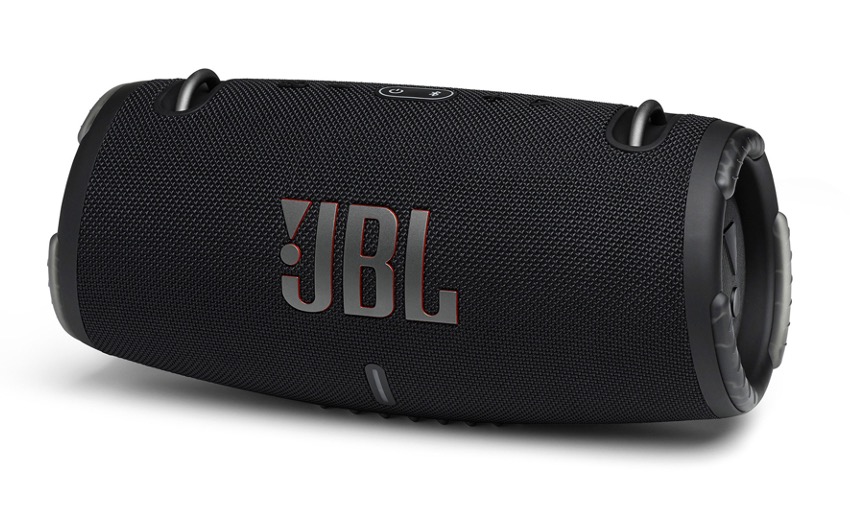
In terms of sound performance, we felt that the JBL Xtreme 3 delivers much deeper and boomy bass as compared to the Charge 5 at higher volume levels. The bass on the Xtreme 3 has plenty of depth and presence, and above 50% volume level the bass feels very tight and preset and gets much louder with every increase in volume.
The bass on the JBL Charge 5, by contrast, feels small and tapered off below 25% volume level. While you can still hear the bass, we felt that it was not as pronounced and consistent as the bass on the JBL Xtreme 3. Having said that, the Charge 5 sounds much better above 25% volume level and you start to get good bass and punchy beats. We felt that the Charge 5 performs much better at mid volume levels and you get really nice highs and decent midrange at around 75% volume level; EDM and rock music sounded really punchy and engaging on the Charge 5, and you can hear the vocals and the instruments with good separation and clarity.
Having said that, we did find that the JBL Charge 5 produces some distortion at 90% to 100% volume level – the treble ranges start to lose its sparkle and the highs sound rather sharp. The bass does not get any louder from above the 75% volume mark, which means that you are just getting louder highs and treble ranges without any increment in bass output. The JBL Charge 5 sounds best when you are playing music from the 25% to 75% volume level.
We felt that the JBL Xtreme 3 delivers much more consistent bass performance than the Charge 5 at every volume level, even at below the 25% volume level. The Xtreme 3 had punchier bass and cleaner midranges than the Charge 5 at higher volume levels, and you do not get the kind of distortion in the highs that you would feel on the Charge 5 at maximum volume level. The Xtreme 3 also delivers pretty decent stereo separation due to its dual tweeters and has nice sonic presence at louder volume levels. You can push this speaker to maximum volume levels and get very little distortion; the bass remains crystal clear and impactful without muddying into the midrange frequencies. The highs also remain clear and clean without sounding harsh like the JBL Charge 5.
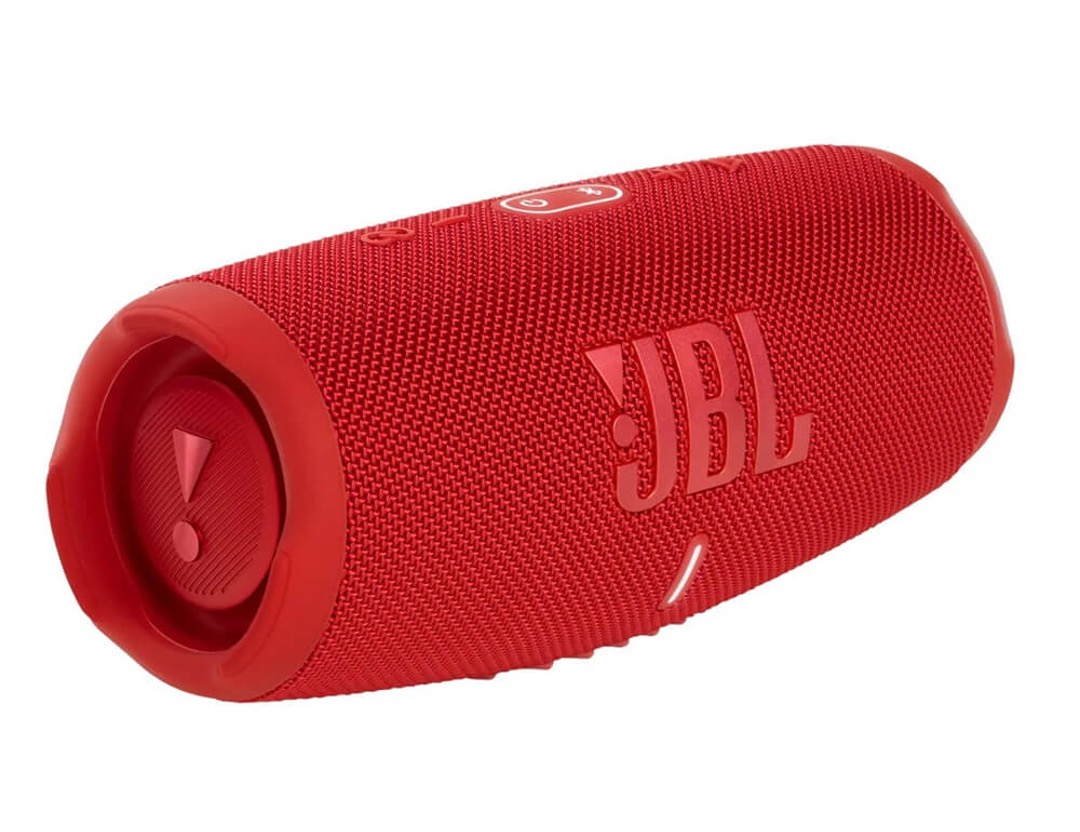
The bass on both the JBL Xtreme 3 and JBL Charge 5 is deep and punchy. Both speakers are great for EDM and rock music where you can really push up the volume and get punchy beats. The JBL Xtreme 3 delivers slightly more bass output than the Charge 5 due to its dual woofer design and larger bass radiators at higher volume levels. That being said, we did find that the Charge 5 delivers slightly punchier bass performance at around 50% volume than the Xtreme 3 – you really need to push up the volume on the Xtreme 3 to hear the difference and get better sound performance and bass.
Overall, we felt that the JBL Charge 5 is on par with the Xtreme 3 at the 25% to 75% volume level mark. Both speakers deliver really bright highs, smooth midranges and punchy bass that adds a lot of depth and impact to music performance. Having said that, we felt that the JBL Xtreme 3 handled louder volume levels above 75% volume better with more consistent bass output and the highs sound crisp with any harshness. We would say that the Xtreme 3 starts to come “alive” above the 75% volume mark and you can really hear the difference in bass and highs with this speaker.
The JBL Charge 5, by contrast, delivers peak sound performance within the 25% to 75% volume range with really nice midrange and bass, but the sound starts to taper off above 75% volume and the bass does not get any louder once it reaches this volume level. We also felt that the highs and treble ranges start to sound harsh near maximum volume level, which is something that we did not hear while using the JBL Xtreme 3.
Specs
In terms of specs, both the JBL Xtreme 3 and JBL Charge 5 are IP67 waterproof and dustproof and can be brought virtually anywhere outdoors. Both speakers come with a built-in battery that can double as a power bank to charge your smartphone devices via USB-C. The JBL Xtreme 3 offers 15 hours of playtime on a single charge, while the JBL Charge 5 provides a slightly longer 20 hours of playtime. Both speakers use Bluetooth 5.1 with A2DP and AVRCP audio codec support which is decent.
The JBL Xtreme 3 provides much more power and bass than the Charge 5 due to its large design. The Xtreme 3 has a power output of 100W compared to the Charge 5’s 40W power output, and also comes with dual woofers and dual tweeters that deliver really nice stereo sound with good bass performance. In many ways, the Charge 5 has similar specs to the previous generation JBL Xtreme 2 with 40W RMS of power output. The JBL Xtreme 3 also has a slightly wider frequency range of 53.5 Hz to 20 kHz by a small margin (the Charge 5’s frequency range is 65 Hz to 20 kHz).
One of the key things to note is that the JBL Charge 5 actually comes with a larger single woofer (2” x 3.5”) woofer compared to the Xtreme 3’s dual 2.76” woofers. This explains why the Charge 5 is able to deliver comparatively punchier bass as compared to the Xtreme 3 at 50% volume level due to the fact that its single woofer is much larger. We did find that the Xtreme 3, however, delivers better bass output at higher volume levels due to its dual woofers.
The JBL Xtreme 3 is much larger than the Charge 5 and has a dimension of 11.73” x 5.4” x 5.24” with a weight of 1.83kg, while the Charge 5 has a dimension of 8.8” x 3.8” x 3.7” and weighs only 0.96kg, which is roughly half the weight of the Xtreme 3 speaker.
Both speakers support the PartyBoost feature which allows you to pair two JBL PartyBoost compatible speakers in stereo mode or link multiple PartyBoost compatible speakers together for a wider listening field.
Design
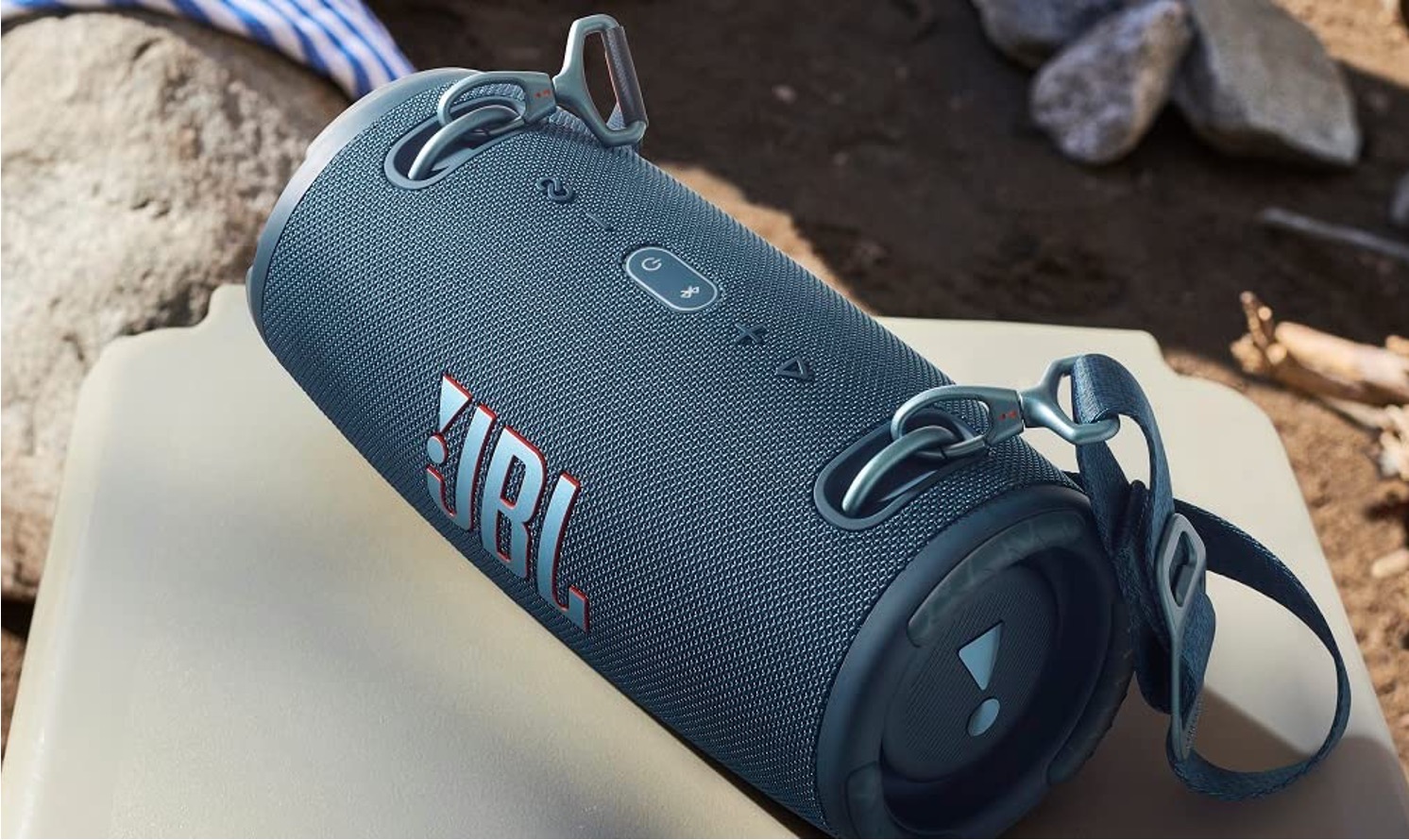
We preferred the design of the JBL Xtreme 3 over the Charge 5 due to the fact that it allows you to clip-on a carrying strap and easily carry the speaker by strapping the carry on around your shoulder. The speaker itself comes with two metallic clips at the top of the speaker for you to attach the carry on, which we found to be a really convenient feature when moving this speaker around.
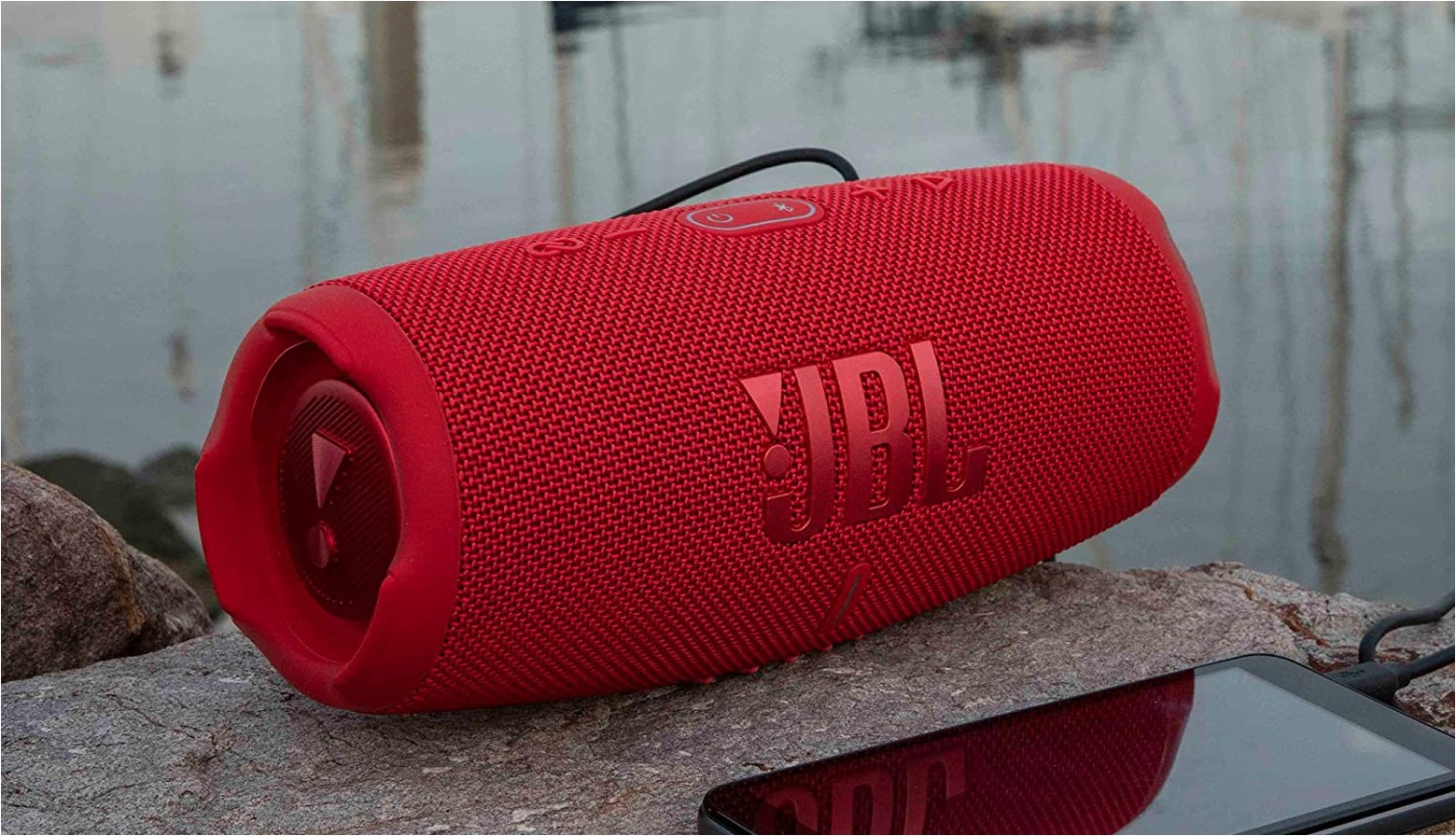
The Charge 5, by contrast, does not come with any carrying strap or speaker handle (like the JBL Boombox 3). You have to carry the speaker by hand and the Charge 5 is a relatively larger speaker compared to the JBL Flip 6, which means that you may strain your hand if you need to carry this speaker around with you. While the Charge 5 is compact enough to be placed inside a backpack, we did find it rather troublesome to bring the speaker around (especially if you are on a beach without a backpack) as you have to hand carry it; the speaker is also quite heavy at 0.96 kg which may put some strain on your hand.
In terms of portability, we would say that the JBL Xtreme 3 is much more well-designed and has easy carry-on straps for you to bring the speaker with you. That said, we were mindful that the Xtreme 3 is much larger and weighs twice that of the Charge 5 – this is something you should take into consideration when choosing between both speakers.
The Verdict?
We really liked the sound performance of the JBL Xtreme 3 and JBL Charge 5. Both speakers are IP67 waterproof and dustproof, and are clearly designed to be used outdoors with their rugged and durable exterior. Both speakers also have powerful battery life, with the Charge 5 delivering slightly longer playtime at 20 hours due to its large internal battery.
Having said that, we felt that the JBL Xtreme 3 had a more user friendly design with a portable clip-on strap that you can use to carry the speaker around, while the Charge 5 lacked any carrying features. We also found that the JBL Xtreme 3 can handle music at higher volume levels much better with balanced sound performance between the highs, mids and bass – they do not distort or sound harsh like the JBL Charge 5 at maximum volume levels. The bass from the Xtreme 3 also sounds much more powerful and has plenty of depth at higher volume levels; the Charge 5 does not deliver louder bass over 75% volume level – it stays the same once it reaches that volume level.
The Charge 5 however does provide really good sound quality from the 25% to 75% volume level with even punchier bass than the Xtreme 3, due to the fact that it comes with larger single woofer. It also delivers really nice highs and smooth midranges, but lacks the stereo separation that the Xtreme 3 has to offer.
If you are looking for a powerful Bluetooth speaker that can handle louder volume outdoors, the JBL Xtreme 3 would be a better option due to its 100W power output and dual woofers which can handle more bass output. The Charge 5 is a great option if you are using the speaker for home listening, and it delivers some really solid bass and crystal clear highs within its volume benchmarks. Overall, the JBL Xtreme 3 does feel like a very powerful Bluetooth speaker with new design improvements, while the JBL Charge 5 feels like an improvement of the the previous generation JBL Xtreme 2 with 40W of power output and a similar design, but with lesser weight and better portability.

